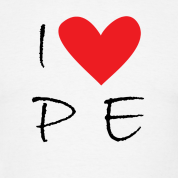Today’s health and wellbeing input on Fitness brought quite a few things I’ve learned throughout school into practice.
 Why is oxygen important when exercising, and what methods of training are linked. There are also the individual fitness factors; Cardiorespiratory Endurance (CRE), muscular endurance, strength, speed, power, and flexibility; which are all tested by different means and trained in different ways.
Why is oxygen important when exercising, and what methods of training are linked. There are also the individual fitness factors; Cardiorespiratory Endurance (CRE), muscular endurance, strength, speed, power, and flexibility; which are all tested by different means and trained in different ways.
SO… What is “aerobic” exercise?
The word aerobic means the use of oxygen. The body’s ability to work aerobically means the heart and lungs are able to work for a long period of time without tiring. Therefore “anaerobic” is where there is a lack of oxygen and the heart cannot physically supply enough to the body in order to perform.
As torturous as it sounds, anaerobic exercise actually has its benefits. Short sharp bursts of exercise done so quickly the heart cannot supply enough oxygen causes a build up of lactic acid. By training to improve your ability to work anaerobically, the muscles can then be trained to work without oxygen and with a build up of lactic acid.
The different types of fitness training …
Fartlek Training
- Fartlek, which means”Speed play” in Swedish, is a method of training where continuous and interval training is combined. It is
 basically a long distance run where the pace is varied – so there will be periods of fast running and periods of slower running. This method of training is best used to improve CRE/aerobic endurance and improvement can be tested by using a bleep test or 12-minute cooper.
basically a long distance run where the pace is varied – so there will be periods of fast running and periods of slower running. This method of training is best used to improve CRE/aerobic endurance and improvement can be tested by using a bleep test or 12-minute cooper.
Weight Training
- Weight training is simply when weights are used to provide resistance to the muscles. It can
 be used to improve both muscular endurance (the ability to work a muscle/group of muscles for a long period of time without tiring) as well as power (a combination of strength and speed). Weight training can be tested by using a bent arm hang test, grip dynamometer, a number of sit ups in a minute or the maximum weight that can be lifted.
be used to improve both muscular endurance (the ability to work a muscle/group of muscles for a long period of time without tiring) as well as power (a combination of strength and speed). Weight training can be tested by using a bent arm hang test, grip dynamometer, a number of sit ups in a minute or the maximum weight that can be lifted.
Sprint training
- By sprinting, you should run a short distance at your maximum speed (e.g. 50m, 100m). An
 example of sprint training would be sprinting to the finish line, and then walking slowly back to the start before repeating. This will, in turn, improve speed. To test speed, you can time a person sprint and see how it improves.
example of sprint training would be sprinting to the finish line, and then walking slowly back to the start before repeating. This will, in turn, improve speed. To test speed, you can time a person sprint and see how it improves.
Static stretching
- Static stretching is a safer way to stretch the body whilst it is resting. Other forms such as
 ballistic stretching are considered dangerous for the body. The body is lengthened into a position where a stretch is felt and held for around 20 seconds. This form of stretching will improve flexibility. Flexibility can be tested by using the sit and reach test.
ballistic stretching are considered dangerous for the body. The body is lengthened into a position where a stretch is felt and held for around 20 seconds. This form of stretching will improve flexibility. Flexibility can be tested by using the sit and reach test.
I feel it is important to work on these areas from early on. I went on to high school with a limited P.E knowledge but was lucky enough to learn to love Physical Education to continue it to Higher. However, I feel a greater emphasis on it in primary would have prevented a lot of people shying away from the subject.
A lot of these things can be very complicated, and of course, you would never do weight training with primary children – their bodies are still growing and would never cope with this. As teachers, we, therefore, have to observe what their current capabilities are and consider their age and developmental stage to plan lessons appropriate for them, whilst still introducing them into physical activity.
with primary children – their bodies are still growing and would never cope with this. As teachers, we, therefore, have to observe what their current capabilities are and consider their age and developmental stage to plan lessons appropriate for them, whilst still introducing them into physical activity.
Here is a link to a video by an English school pupil, Amy Shaw, about other training methods:


Top post, thanks